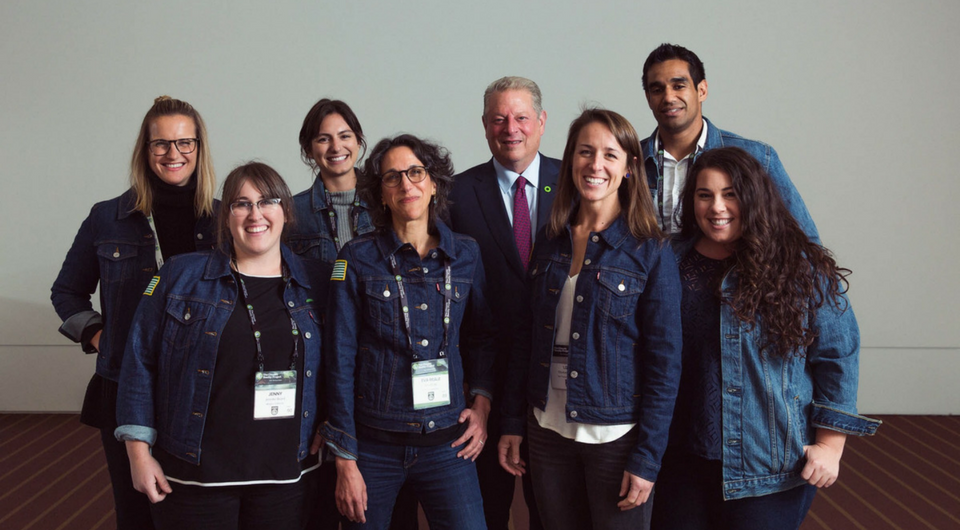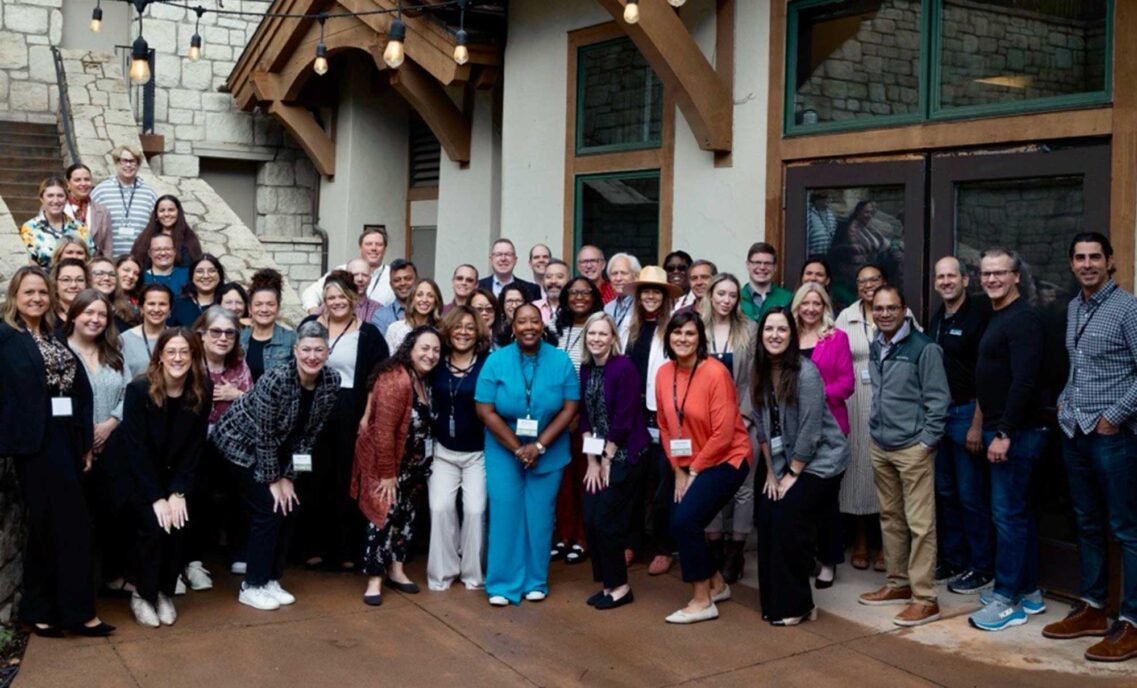Editor’s Note: Last month, as part of LS&Co.’s ongoing commitment to address climate change, we sent five employees to Al Gore’s Climate Reality Training in Pittsburgh, Pennsylvania. Employee Ada Bernstein shares her experience.
The first Climate Reality Training was held in a barn on former Vice President Al Gore’s Tennessee farm. For the 36th training, which I attended in October with four other LS&Co. Climate Ambassadors, 1,400 people filled an airplane-hangar-sized convention center in downtown Pittsburgh.
Over the last 10 years, Al Gore and thousands of passionate, concerned individuals have made it their mission to educate others about the very real impact we are having on our planet and the urgent need to halt, change or reverse that impact. The trainings aim to equip participants with the information and tools to act on that need in their own communities.
Like most people at the three-day training, I was aware of the facts of the climate crisis. Both of my parents are sustainable architects — the rise of sea level and geothermal heating systems were common dinner table conversation topics — and I’ve developed my own interest in understanding and reducing post-consumer waste. However, no amount of background knowledge could have prepared me for the overwhelming emotional impact of example after example of how rising temperatures are destroying human, animal and plant life.
The Climate Reality Training crystalized my understanding that climate change is real, caused by humans, and already causing irreversible change and global upheaval. The crisis goes beyond polar bears and melting icecaps — we’re already feeling the effects of extreme weather in Houston, of drought and famine in Syria, of concentrated pollution in Beijing. The scale of the problem is almost paralyzingly daunting. Its causes are so deeply ingrained in our consumption patterns, manufacturing processes and attitude toward natural resources that I’ve often struggled to see how my own individual actions could possibly make a significant impact.
For me, the real value of the training wasn’t the jet stream of science factoids I learned, the presentation skills I practiced or even shaking Al Gore’s hand, but rather the powerful collective energy I felt from my fellow participants. Sitting in that conference hall, I understood for the first time how my actions contribute to the domino effect that is now cascading around the world, galvanizing environmental action and halting the climate crisis.
I also became more fully aware of how pivotal corporate action can be. I left the Climate Reality Training feeling extremely proud to be a part of Levi Strauss & Co. — a remarkable number of people expressed a love for our company, which was only compounded when I explained more about the environmental work we’re already doing. One woman in particular, a lifelong San Francisco native and nurse, emotionally recounted LS&Co.’s involvement in the HIV/AIDS crisis and how significant the company’s public stance and employee education program had been for her community. We are on the path to play a similarly impactful role in the environmental movement.
The main question I’ve gotten after coming back from the Climate Reality Training is: “What can I do to help?” And honestly, that’s a question I’m still grappling with myself. The training made it clear that collective action is essential to saving our planet and emphasized political activism and community education as primary vehicles for change but didn’t provide a rulebook for how to go about our everyday lives in a way that doesn’t harm our environment or each other.
So for now, my answer to that question is simply “Ask.” Ask about the source of your electricity, ask about where your trash goes, ask about well-being of the factory worker who made your jeans. Ask, and if you’re unhappy with the answer, take steps to change it.
The framework for Al Gore’s climate presentation is: Do we have to change, can we change and will we change? In Pittsburgh, 1,400 people responded with a resounding “yes.” I hope you’ll say “yes” too.







